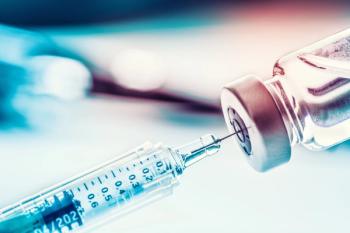
For AAP, 75 years of making a difference in the lives of children
As the American Academy of Pediatrics' 75th year comes to a close at the organization's National Conference and Exhibition in Washington, D.C., its members - now 60,000 strong - are taking time to examine some of the successes that have contributed to advancements in children's health.
As the American Academy of Pediatrics' 75th year comes to a close at the organization's National Conference and Exhibition in Washington, D.C., its members - now 60,000 strong - are taking time to examine some of the successes that have contributed to advancements in children's health.
Among the most notable AAP contributions to children's health over the past 75 years are:
- An increase in immunization rates and a lower incidence of infectious diseases, such as polio, measles, chickenpox and pneumonia
- Improvement in folic acid consumption among pregnant women as a way to reduce birth defects
- Training of more than 1 million pediatricians worldwide in the Neonatal Resuscitation Program (NRP)
- Release of more than 350 policy statements and recommendations on a range of topics, including guiding pediatricians in reporting of child abuse (1966); encouraging breastfeeding for full-term infants (1978); advocating that mature adoptees have access to their birth records (1981); opposing corporal punishment in schools (1984); recommending use of analgesia during circumcision (1999); suggesting no TV for children under 2 (2001); promoting elimination of soft drinks in schools (2004); and advocating emergency contraception availability for teens (2005)
- Influence on the passage of the Pediatric Rule, the 1998 Food and Drug Administration (FDA) regulation that was created to ensure drugs are properly labeled for pediatric use based on scientific studies
Another major AAP achievement is the 1992 policy statement advocating placing infants on their back instead of their stomach to sleep. The practice has resulted in a 50% reduction in the incidence of sudden infant death syndrome (SIDS) in the United States.
"The AAP has a direct impact on the future because today's children are tomorrow's leaders," said AAP President Carol Berkowitz, MD. "By advocating for, and providing the means for children to be emotionally and physically healthy, the AAP is instrumental in ensuring that the future is bright."
What comes next? AAP goals for the future include:
- universal health care coverage for all children
- increased efforts to prevent and reduce childhood obesity
- expanded education about childhood health issues for parents and pediatricians
- greater understanding and research in human genetics
- increased efforts to reduce prematurity
- improvements in vaccine efficacy and delivery.
Newsletter
Access practical, evidence-based guidance to support better care for our youngest patients. Join our email list for the latest clinical updates.










